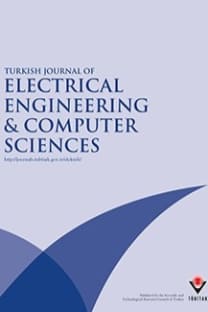Comparison study of computational parameter values between LRN and NARX in identifying nonlinear systems
Layer recurrent network, nonlinear autoregressive with exogenous inputs, nonlinear system identification, recurrent neural network
Comparison study of computational parameter values between LRN and NARX in identifying nonlinear systems
Layer recurrent network, nonlinear autoregressive with exogenous inputs, nonlinear system identification, recurrent neural network,
___
- H. Lee, Y. Park, K. Mehrotra, C. Mohan, S. Ranka, “Nonlinear system identification using recurrent networks”, IEEE International Joint Conference on Neural Networks, Vol. 3, pp. 2410–2415, 1991.
- D. Psichogios, L. Ungar, “Nonlinear internal model control and model predictive control using neural networks”, Proceedings of the 5th IEEE International Symposium on Intelligent Control, pp. 1082–1087, 1990.
- R. Gao, A. O’Dwyer, E. Coyle, “Model predictive control of CSTR based on local model networks”, Proceedings of the Irish Signals and Systems Conference, pp. 397–402, 2002.
- D. Soloway, P.J. Haley, “Neural generalized predictive control: A Newton-Raphson implementation”, Proceedings of the 11th IEEE International Symposium on Intelligent Control, pp. 277–282, 1996.
- M. Basso, L. Giarre, S. Groppi, G. Zappa, “NARX models of an industrial power plant gas turbine”, IEEE Transactions on Control Systems Technology, Vol. 13, pp. 599–604, 2005.
- H. Luo, S. Puthusserypady, “NARX neural networks for dynamical modelling of fMRI data”, Proceedings of the International Joint Conference on Neural Networks, pp. 542–546, 2006.
- I. Maio, I. Stievano, F.G. Canavero, “NARX approach to black-box modelling of circuit elements”, Proceedings of the IEEE International Symposium on Circuits and Systems, Vol. 3, pp. 411–414, 1998.
- H.P.H. Anh, N.H. Phuc, “Inverse neural MIMO NARX model identification of nonlinear system optimized with PSO”, Proceedings of the 5th IEEE International Symposium on Electronic Design, Test and Applications, pp. 144–149, 2010.
- H.P.H. Anh, “Inverse dynamic model identification of 2-axes PAM robot arm using neural MIMO NARX model”, IEEE/ASME International Conference on Advanced Intelligent Mechatronics, pp. 1282–1287, 2009.
- E. Pisoni, M. Farina, C. Carnevale, L. Piroddi, “Forecasting peak air pollution levels using NARX models”, Engineering Applications of Artificial Intelligence, Vol. 22, pp. 593–602, 2009.
- R. Liutkeviˇcius, “Fuzzy Hammerstein model of nonlinear plant”, Nonlinear Analysis: Modelling and Control, Vol. 13, pp. 201–212, 2008.
- K.K. Ahn, H.P.H. Anh, “Inverse double NARX fuzzy modeling for system identification”, IEEE/ASME Transactions on Mechatronics, Vol. 15, pp. 136–148, 2010.
- T.N. Lin, C. Giles, B.G. Horne, S.Y. Kung, “A delay damage model selection algorithm for NARX neural networks”, IEEE Transactions on Signal Processing, Vol. 45, pp. 2719–2730, 1997.
- J.L. Elman, “Finding structure in time”, Cognitive Science, Vol. 14, pp. 179–211, 1990.
- H. Demuth, M. Beale, M. Hagan, Neural Network’s Toolbox 5 User’s Guide, MathWorks, 2007.
- M. Saggar, T. Mericli, S. Andoni, R. Miikkulainen, “System identification for the Hodgkin-Huxley model using artificial neural networks”, International Joint Conference on Neural Networks, pp. 2239–2244, 2007.
- F.H. Nordin, F.H. Nagi, “Layer-recurrent network in identifying a nonlinear system”, International Conference on Control, Automation and Systems, pp. 387–391, 2008.
- M.J. Sidi, Spacecraft Dynamics & Control: A Practical Engineering Approach, Cambridge, Cambridge University Press, 1997.
- F.C. Moon, Applied Dynamics: With Applications to Multibody and Mechatronic Systems, New York, Wiley, 1998. S. Thongchet, S. Kuntanapreeda, “A fuzzy-neural bang-bang controller for satellite attitude control”, Journal of King Mongkut’s Institute of Technology North Bangkok, Vol. 11, pp. 11–17, 2001.
- W. Gang, L. Hua, K.F. Man, S. Kwong, “A robust nonlinear system identification algorithm based on homotopy theory”, IEEE International Conference on Systems, Man, and Cybernetics, Computational Cybernetics and Simulation, Vol. 2, pp. 1313–1316, 1997.
- X. Li, T. Chen, “System identification using a new dynamic neural network”, Proceedings of International Joint Conference on Neural Networks, Vol. 3, pp. 2363–2366, 1993.
- R.O. Duda, P.E. Hart, D.G. Stork, Pattern Classification, New York, Wiley, 2001.
- J.D. Villiers, E. Barnard, “Backpropagation neural nets with one and two hidden layers”, IEEE Transactions on Neural Networks, Vol. 4, pp. 136–141, 1992.
- S. Haykin, Neural Networks: A Comprehensive Foundation, New Jersey, Prentice Hall, 1999.
- B.G. Kermani, M.W. White, H.T. Nagle, “A new method in obtaining a better generalization in artificial neural networks”, Proceedings of the 16th Annual International Conference of the IEEE Engineering in Medicine and Biology Society: Engineering Advances: New Opportunities for Biomedical Engineers, pp. 1119–1120, 1994.
- ISSN: 1300-0632
- Yayın Aralığı: Yılda 6 Sayı
- Yayıncı: TÜBİTAK
Farah Hani NORDIN, Farrukh Hafiz NAGI, Aidil Azwin Zainul ABIDIN
A computer-aided diagnosis system for breast cancer detection by using a curvelet transform
Wavelet multiscale analysis of a power system load variance
Samir AVDAKOVIC, Amir NUHANOVIC, Mirza KUSLJUGIC
Sakthivel PADAIYATCHI, Mary DANIEL
Biogeography-based optimization for voltage stability improvement and reactive reserve management
Subramanian ANNAMALAI, Ravi GOVINTHASAMY
Abbas ESMAEILI, Saeid ESMAEILI
Mehmet Ali ANADOL, Musa AYDIN, Tankut YALÇINÖZ
